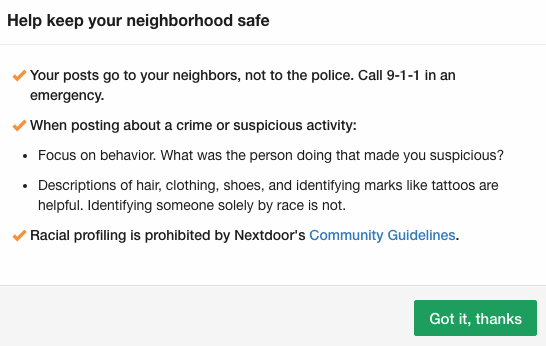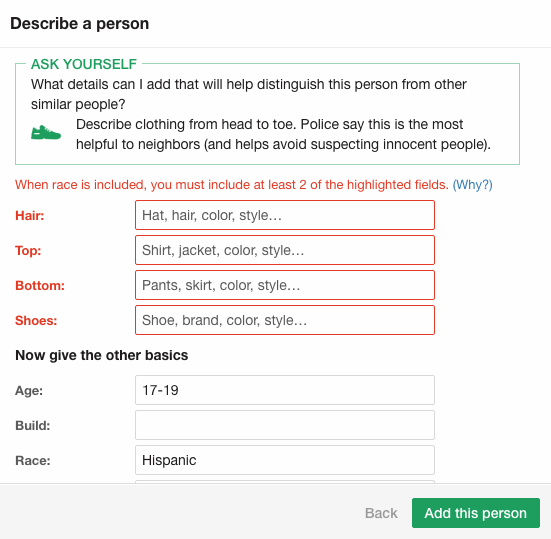
The Android tablet Cambrian explosion! Photo by Kevin Marks on Flickr.
You can now sign up to receive each day’s Start Up post by email. You’ll need to click a confirmation link, so no spam.
A selection of 12 links for you. Chew 40 times before swallowing. I’m charlesarthur on Twitter. Observations and links welcome.
Astronomers don’t think that so-called SETI signal is aliens—and neither should you • WIRED
»
While astronomers don’t know if this signal is squished or spread-out, they do know the middle frequency that the telescope was sensitive to: around 11 gigahertz.
Two things: Radio telescopes are supposed to catch cool waves from space. And they do that. But they also catch less cool waves from Earth, or from Earth-orbit. Airport radar, Wi-Fi, spark plugs, cell phones, and basically anything that runs on electricity emits radio waves. And satellites use these frequencies to ping and downlink. The research team has not presented data to rule out humans as the signal’s makers. In fact, one will note that 11 gigahertz is in the exact middle of a band of the radio spectrum allocated to “fixed satellites.”
“We see signals that come and go every day, all the time,” says Gerry Harp, Director of SETI Research at the SETI Institute. “We would not have given much credibility to this signal in our survey. It would be one of so many others, and they are almost always local interference.”
«
The aliens are us? Disappointing.
link to this extract
Apple is working on iPad upgrades and refreshed Mac lineup • Bloomberg
»
Upcoming software upgrades for the iPad include wider operating-system support for Apple’s stylus accessory, while hardware performance improvements are also in development, according to the people. The refreshed Mac hardware line includes new versions of the iMac desktop, MacBook Air laptop, and a 5K standalone monitor in collaboration with LG Electronics Inc., in addition to a thinner MacBook Pro laptop.
The company hopes to ship the updated iPad software next year, while the Macs are expected as soon as late 2016, said the people, who asked not to be identified discussing unannounced products. Apple has not updated any Macs, besides the 12-inch MacBook, since last year. The company declined to comment.
«
More stylus support on the iPad, and USB-C on the Macbook Air and iMacs, and a weird OLED function key thing on the Macbook Pro. Macs arriving some time in October, iPad software landing next year.
link to this extract
Weak tablet demand prompting vendors to leave segment • Digitimes
»
With tablet demand continuing to weaken, Taiwan-based vendors have taken a conservative attitude about their tablet operation. Asustek Computer and Acer have turned to focus more on niche applications, while Micro-Start International (MSI) has already phased out of the business and to focus mainly on gaming PC product lines. China-based white-box players that have joined Intel’s China Technology Ecosystem (CTE), have also mostly stopped pushing tablet products.
Dropping demand is expected to cause Asustek’s tablet shipments to fall below three million units in 2016, according to sources from the upstream supply chain, leaving Apple the only player that is still able to achieve strong profits from the tablet sector.
The sources also pointed out that despite weakening tablet shipments, Wintel-based 2-in-1 devices continue to enjoy growth. However, growth rates are still not strong enough to offset the decline of tablets…
…As for the white-box tablet industry, the current number of players that is still releasing tablet products is only one-third of the industry’s peak. Many tablet white-box players that were selected by Intel’s nurturing project have already given up their tablet development as Intel has been cutting subsidies and new platform development.
«
Significant development: Asus(tek) made the Nexus 7, which was probably the best-selling Google Android tablet of all time. (Via Harvey.)
link to this extract
Exclusive: Google will absorb Nest software developers • Fortune
»
Nest’s entire platform team will become part of Google, which also resides under the Alphabet umbrella, in order to create a unified Internet of things platform. It will be led by longtime Google executive Hiroshi Lockheimer, who currently serves as senior vice president of Android and who recently assumed more responsibility for “living room” products. The combined group also will continue to work on Google Home, a smart speaker rival to the Amazon Echo, while simultaneously fending off Amazon challenges elsewhere in the smart home.
Nest and Google are likely to pitch this as an obvious synergy, but it also plays into ongoing efforts to pare costs at smaller Alphabet units other than Google. By moving Nest software developers over to Google payroll, Nest’s financial situation would improve dramatically (so long as new Nest-branded products continue to be developed).
«
I still think Jan Dawson’s overall analysis of the smart home scenario from May 2016 is correct: the problem for Nest is that the addressable market is still pretty small, so it needs to make different things, not just hope more people will buy its thermostats and smoke alarms.
Also not mentioned: what this does to Tony Fadell’s pledge that Nest wouldn’t share data with Google. Or is that long gone?
link to this extract
Amazon’s Echo will be able to control Sonos speakers next year • The Verge
»
Beginning in 2017, anyone with an Alexa-enabled device — right now that’s the Echo, Echo Tap, or Echo Dot — will be able to control Sonos speakers with voice commands.
It’s a great pairing for both companies; Sonos speakers sound way better than the Echo, and Alexa is quickly evolving as the leading smart home voice assistant. And since everything works over Wi-Fi, all existing Sonos devices are supported; Amazon’s Echo is still handling the microphone / listening part and communicating commands to the Sonos gear.
«
Why we still don’t have better batteries • MIT Technology Review
»
According to a recent analysis of more than $4bn in investments in energy storage by Lux Research, startups developing “next-generation” batteries—i.e., beyond lithium-ion—averaged just $40m in funding over eight years. Tesla’s investment in its Gigafactory, which will produce lithium-ion batteries, will total around $5bn. That huge investment gap is hard to overcome.
“It will cost you $500m to set up a small manufacturing line and do all the minutiae of research you need to do to make the product,” says Gerd Ceder, a professor of materials science at the University of California, Berkeley, who heads a research group investigating novel battery chemistries. Automakers, he points out, may test new battery systems for years before making a purchase decision. It’s hard to invest $500m in manufacturing when your company has $5m in funding a year.
Even if new battery makers manage to bring novel technologies to market, they face a dangerous period of ramping up production and finding buyers. Both Leyden Energy and A123 Systems failed after developing promising new systems, as their cash needs climbed and demand failed to meet expectations. Two other startups, Seeo and Sakti3, were acquired before they reached mass production and significant revenues, for prices below what their early-stage investors probably expected.
«
Facebook recommended that this psychiatrist’s patients friend each other • Fusion
»
Most of her patients are senior citizens or people with serious health or developmental issues, but she has one outlier: a 30-something snowboarder. Usually, Facebook would recommend he friend people his own age, who snowboard and jump out of planes. But Lisa [the psychiatrist; not her real name] told me that he had started seeing [friend recommendations for] older and infirm people, such as a 70-year-old gentleman with a walker and someone with cerebral palsy.
“He laughed and said, ‘I don’t know any of these people who showed up on my list— I’m guessing they see you,’” recounted Lisa. “He showed me the list of friend recommendations, and I recognized some of my patients.”
She sat there awkwardly and silently. To let him know that his suspicion was correct would violate her duty to protect her patients’ privacy.
Another one of her female patients had a friend recommendation pop up for a fellow patient she recognized from the office’s elevator. Suddenly, she knew the other patient’s full name along with all their Facebook profile information.
“It’s a massive privacy fail,” said Lisa. “I have patients with HIV, people that have attempted suicide and women in coercive and violent relationships.”
«
Same sort of thing, at one remove, that got Google Buzz effectively shut down and earned Google a 20-year oversight from the US Federal Trade Commission.
link to this extract
Confessions of an ex-Facebook trending news curator: ‘They are just going to get rid of the product altogether’ • Digiday
Tanya Dua got hold of one such, who had gems like this:
»
[the Gizmodo article] said we weren’t treated like other Facebook employees. That’s not true, we were treated like anybody else. We could go to the happy hours, participate in the events, people talked with us in the office. We weren’t tucked away in some corner. We got three free meals. But my biggest problem was that while all these perks were great, they pampered us into complacency.”
Q: What do you mean?
A: Most newsrooms have discussions about what’s going on. You don’t just sit on your computer and write with your headphones on all day. When we were on these topics, and I had a question or wanted to get an editor’s opinion, I always felt like I was bothering them. The push toward quotas and producing content didn’t allow for that. You never felt like you were able to voice any considerations. Like, for instance, there were problems with the tool’s tagging feature. There were pre-set keywords, but they were sometimes inaccurate and wrong, and there was nowhere for us to voice that these topics were insufficient……
Q: So the purpose of the trending team was just to teach the algorithm how to eventually filter the news itself?
A: I would like to believe that, because that would mean that we actually served a purpose and did something good. But if you’ve used the tool in the last few days, you’d realize that the algorithm didn’t learn shit. The topics are just wrong — they have bad articles and insufficient sources. I think they are just going to get rid of the product altogether, because there is going to be backlash when people who do use the tool realize that the quality has gone down — unless there are severe algorithmic changes that improve the quality of the topics.«
A quote for the ages to come: “the algorithm didn’t learn shit.”
link to this extract
Notes on that StJude/MuddyWatters/MedSec thing • Errata Security
Rob Graham on the “St Jude hackers approached hedge fund/shorting company Muddy Waters saying they had found zero-day flaws in MedSec pacemakers:
»
There are many ethical issues, but the first should be dishonesty and spin of the Muddy Waters research report.
The report is clearly designed to scare other investors to drop St Jude stock price in the short term so that Muddy Waters can profit. It’s not designed to withstand long term scrutiny. It’s full of misleading details and outright lies.
For example, it keeps stressing how shockingly bad the security vulnerabilities are, such as saying:
»
We find STJ Cardiac Devices’ vulnerabilities orders of magnitude more worrying than the medical device hacks that have been publicly discussed in the past.
«
This is factually untrue. St Jude problems are no worse than the 2013 issue where doctors disable the RF capabilities of Dick Cheney’s pacemaker in response to disclosures. They are no worse than that insulin pump hack. Bad cybersecurity is the norm for medical devices. St Jude may be among the worst, but not by an order-of-magnitude.
The term “orders of magnitude” is math, by the way, and means “at least 100 times worse”. As an expert, I claim these problems are not even one order of magnitude (10 times worse). I challenge MedSec’s experts to stand behind the claim that these vulnerabilities are at least 100 times worse than other public medical device hacks.
«
Apple made wireless headphones called ‘AirPods’ for iPhone 7 • Pocket-lint
»
Something quite unexpected might be announced alongside the next iPhone models on 7 September.
While everyone is focused on built-in hardware features for the so-called iPhone 7, Russian regulatory trademark filings spotted by mobiltelefon.ru seem to confirm that Apple is readying standalone hardware for its upcoming phones. The filings, which were published by the Eurasian Economic Commission on 29 August, refer to wireless headphones called AirPods.
This has been a long-rumored brand name for Apple’s wireless headphones for iPhone 7. The next iPhone is thought to ditch the 3.5mm headphone jack, leaving customers with either the Lightning connector or Bluetooth technology for connecting audio devices like headphones. These AirPod headphones are likely a first-party accessory, as there is no indication they’re a Beats product.
«
Odd that they haven’t leaked from the supply chain, since Apple would have to be making them by the multiple millions.
link to this extract
A message to the Apple community in Europe • Apple (IE)
»
Taxes for multinational companies are complex, yet a fundamental principle is recognized around the world: A company’s profits should be taxed in the country where the value is created. Apple, Ireland and the United States all agree on this principle.
In Apple’s case, nearly all of our research and development takes place in California, so the vast majority of our profits are taxed in the United States. European companies doing business in the U.S. are taxed according to the same principle. But the Commission is now calling to retroactively change those rules.
Beyond the obvious targeting of Apple, the most profound and harmful effect of this ruling will be on investment and job creation in Europe. Using the Commission’s theory, every company in Ireland and across Europe is suddenly at risk of being subjected to taxes under laws that never existed.
«
“Taxed in the country where the value is created” sounds good – but in that case why would subsidiaries of multinationals based in country A ever pay any tax on transactions and profit generated in country B, even though they might be doing transactions just like those of a non-multinational based in country B – which would be taxed?
link to this extract
State aid: Ireland gave illegal tax benefits to Apple worth up to €13bn • European Commission press release
»
Following an in-depth state aid investigation launched in June 2014, the European Commission has concluded that two tax rulings issued by Ireland to Apple have substantially and artificially lowered the tax paid by Apple in Ireland since 1991. The rulings endorsed a way to establish the taxable profits for two Irish incorporated companies of the Apple group (Apple Sales International and Apple Operations Europe), which did not correspond to economic reality: almost all sales profits recorded by the two companies were internally attributed to a “head office”. The Commission’s assessment showed that these “head offices” existed only on paper and could not have generated such profits. These profits allocated to the “head offices” were not subject to tax in any country under specific provisions of the Irish tax law, which are no longer in force. As a result of the allocation method endorsed in the tax rulings, Apple only paid an effective corporate tax rate that declined from 1% in 2003 to 0.005% in 2014 on the profits of Apple Sales International.
This selective tax treatment of Apple in Ireland is illegal under EU state aid rules, because it gives Apple a significant advantage over other businesses that are subject to the same national taxation rules. The Commission can order recovery of illegal state aid for a ten-year period preceding the Commission’s first request for information in 2013. Ireland must now recover the unpaid taxes in Ireland from Apple for the years 2003 to 2014 of up to €13bn, plus interest.
«
That’s a hell of a lot more than I had been expecting – yet even so Apple will be able to afford it quite easily. (It is going to appeal.) Here’s a notable point though:
»
The taxable profits of Apple Sales International and Apple Operations Europe in Ireland are determined by a tax ruling granted by Ireland in 1991, which in 2007 was replaced by a similar second tax ruling. This tax ruling was terminated when Apple Sales International and Apple Operations Europe changed their structures in 2015.
«
Is the structure more normal-tax-friendly now?
link to this extract
Errata, corrigenda and ai no corrida: none notified


























